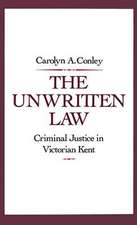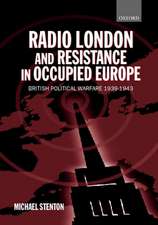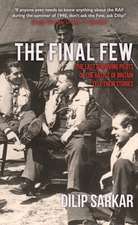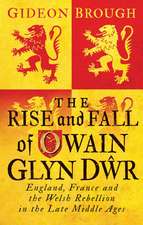The Imperial Army Project: Britain and the Land Forces of the Dominions and India, 1902-1945
Autor Douglas E. Delaneyen Limba Engleză Hardback – 11 ian 2018
| Toate formatele și edițiile | Preț | Express |
|---|---|---|
| Paperback (1) | 249.69 lei 10-16 zile | |
| OUP OXFORD – 3 mar 2020 | 249.69 lei 10-16 zile | |
| Hardback (1) | 850.68 lei 31-37 zile | |
| OUP OXFORD – 11 ian 2018 | 850.68 lei 31-37 zile |
Preț: 850.68 lei
Preț vechi: 1136.38 lei
-25% Nou
Puncte Express: 1276
Preț estimativ în valută:
162.77€ • 170.41$ • 134.69£
162.77€ • 170.41$ • 134.69£
Carte tipărită la comandă
Livrare economică 25-31 martie
Preluare comenzi: 021 569.72.76
Specificații
ISBN-13: 9780198704461
ISBN-10: 0198704461
Pagini: 374
Ilustrații: 46 black and white images, figures, and maps
Dimensiuni: 164 x 241 x 28 mm
Greutate: 0.73 kg
Editura: OUP OXFORD
Colecția OUP Oxford
Locul publicării:Oxford, United Kingdom
ISBN-10: 0198704461
Pagini: 374
Ilustrații: 46 black and white images, figures, and maps
Dimensiuni: 164 x 241 x 28 mm
Greutate: 0.73 kg
Editura: OUP OXFORD
Colecția OUP Oxford
Locul publicării:Oxford, United Kingdom
Recenzii
This work is valuable to academics and graduate students alike who study the British Empire's military effort in the twentieth century.
This is a hugely ambitious and successful book. In explaining how the British imperial military coalitionworked, Delaney alsoexplains how it was that the people of a small island off the north-west coast of Europe were able for so long to defend an empire that spanned the globe. It should be compulsory reading for anyone interested in the history of the British Empire in the era of the two world wars.
How did the Imperial General Staff manage to secure the cooperation of the sometimes fractious and increasingly autonomous Dominions and India in standardizing the ways in which they could operate together in war almost seamlessly? Delaneys beautifully written study is based on extraordinarily thorough research that clearly explains how the Imperial Army Project succeeded in moulding Empire-Commonwealth armies that could and did fight as one through two world wars.
Delaneys depth of knowledge and acute comparative analysis are on full display with The Imperial Army Project.He pivots easily from one national army to another, each with its own peculiarities, and then returns to the British, who tied it all together.This is a masterpiece of scholarship that adds exhaustive archival research to the existing literature and creates something completely new.
The Imperial Army Project is a masterful study. Douglas E. Delaney skilfully shows how the armies of Britain, Canada, Australia, New Zealand, the Union of South Africa and India spent four decades developing national armies that were compatible across the British Empire. This interoperability allowed for the efficient combination of military forces during the two world wars. Britain did not, and need not, stand alone. The empire stood together. Indeed, it this comparative approach that makes Delaneys a must-read work.
Douglas Delaney's masterly book shows that the creation of a series of interoperable armies across the British Empire was no accident. Rather it was the result of a highly successful imperial project which contributed significantly to the victories won in 1918 and 1945. This book is an important contribution to both military and imperial history.
This is a hugely ambitious and successful book. In explaining how the British imperial military coalitionworked, Delaney alsoexplains how it was that the people of a small island off the north-west coast of Europe were able for so long to defend an empire that spanned the globe. It should be compulsory reading for anyone interested in the history of the British Empire in the era of the two world wars.
How did the Imperial General Staff manage to secure the cooperation of the sometimes fractious and increasingly autonomous Dominions and India in standardizing the ways in which they could operate together in war almost seamlessly? Delaneys beautifully written study is based on extraordinarily thorough research that clearly explains how the Imperial Army Project succeeded in moulding Empire-Commonwealth armies that could and did fight as one through two world wars.
Delaneys depth of knowledge and acute comparative analysis are on full display with The Imperial Army Project.He pivots easily from one national army to another, each with its own peculiarities, and then returns to the British, who tied it all together.This is a masterpiece of scholarship that adds exhaustive archival research to the existing literature and creates something completely new.
The Imperial Army Project is a masterful study. Douglas E. Delaney skilfully shows how the armies of Britain, Canada, Australia, New Zealand, the Union of South Africa and India spent four decades developing national armies that were compatible across the British Empire. This interoperability allowed for the efficient combination of military forces during the two world wars. Britain did not, and need not, stand alone. The empire stood together. Indeed, it this comparative approach that makes Delaneys a must-read work.
Douglas Delaney's masterly book shows that the creation of a series of interoperable armies across the British Empire was no accident. Rather it was the result of a highly successful imperial project which contributed significantly to the victories won in 1918 and 1945. This book is an important contribution to both military and imperial history.
Notă biografică
Douglas E. Delaney holds the Canada Research Chair in War Studies at the Royal Military College of Canada. He is the author of The Soldiers' General: Bert Hoffmeister at War (2005), which won the 2007 C.P. Stacey Prize for Canadian Military History, and Corps Commanders: Five British and Canadian Generals at War, 1939-1945 (2011). He is also co-editor of Capturing Hill 70: Canada's Forgotten Battle of the First World War (2016) and Turning Point 1917: The British Empire at War (2017). Professor Delaney is a retired lieutenant-colonel who served with the First and Third Battalions, Princess Patricia's Canadian Light Infantry, and the Canadian Airborne Regiment.















